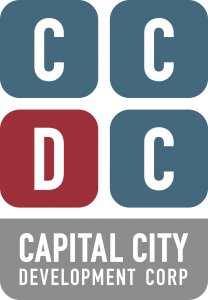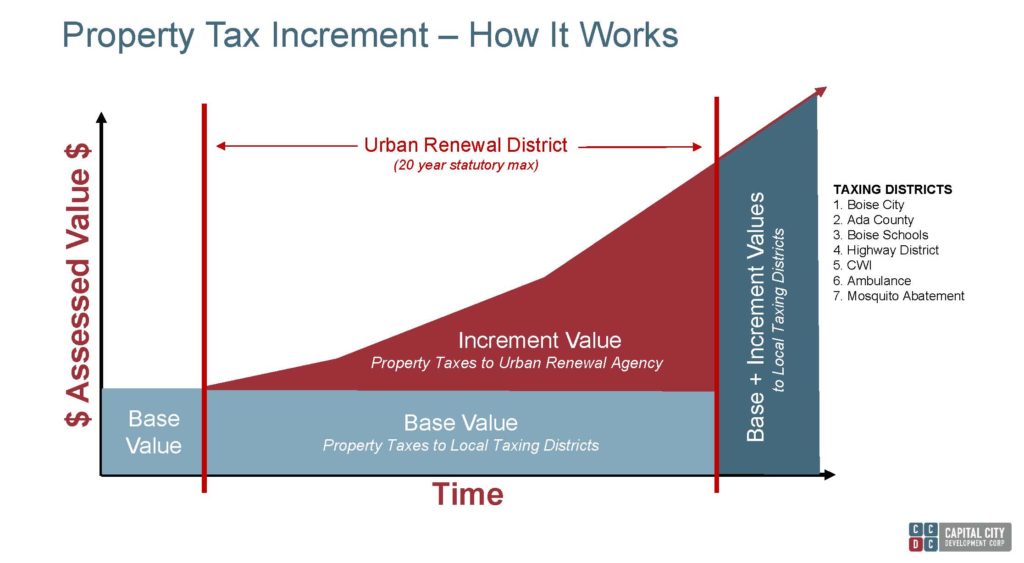Resources, Reports & Studies
Can’t find what you’re looking for?
- FY2024 Financial Statements
- FY2023 Financial Statements
- FY2022 Financial Statements
- FY2021 Financial Statements
- FY2020 Financial Statements
- FY2019 Financial Statements
- FY2018 Financial Statements
- FY2017 Financial Statements
- FY2016 Financial Statements
- FY2015 Financial Statements
- FY2014 Financial Statements
- FY2013 Financial Statements
- FY2012 Financial Statements
- FY2011 Financial Statements
- FY2010 Financial Statements
- FY2009 Financial Statements
Each year, CCDC evaluates and revises a five-year, fiscally responsible Capital Improvement Plan (CIP) delineating the Agency’s forthcoming initiatives. It serves as a predictable framework for coordinating capital projects with intergovernmental agencies and collaborating with private partners. The CIP stands as a cornerstone for the Agency’s strategic vision and is developed in close coordination with inter-agency and community partners to achieve economic and redevelopment goals aligned with the city’s long-term vision.
The CIP is built in conjunction with the one-year budget to allocate limited resources by District to various capital improvement projects and participation agreements.
2026-2030 Capital Improvement Plan
2025-2029 Capital Improvement Plan
2024-2028 Capital Improvement Plan
Below are the CCDC web-ready logos with a transparent background. Click on the link to open in a new tab or right click on an image to save. Please contact CCDC @ 208-384-4264 for print-ready graphics.
Aerial of CCDC Urban Renewal Districts
Boise R/UDAT
River Myrtle/Old Boise District – Termination Year 2025
- River Myrtle Old Boise Urban Renewal Plan – 2004
- River Street–Myrtle Street Master Plan
- River Myrtle Old Boise Feasibility Study
- River Myrtle Old Boise Urban Renewal District Map
Westside District – Termination Year 2026
- Westside Downtown Urban Renewal Plan
- Westside Downtown Framework Master Plan
- 14th Street Neighborhood Strategy
- Westside District Refresh
- Westside District Plan Refresh
- First Amendment to the Urban Renewal Plan Westside Downtown
- Westside Urban Renewal District Map
30th Street District – Termination Year 2033
- 30th Street Urban Renewal Plan
- First Amendment to the 30th Street Urban Renewal Plan
- 30th Street Area Master Plan
- 30th Street Urban Renewal District Map
Shoreline District – Termination Year 2039
- Shoreline Urban Renewal Plan
- Shoreline Urban Renewal District Feasibility Study
- Shoreline District Urban Framework
- Shoreline Urban Renewal District Map
Gateway East District – Termination Year 2039
- Gateway East Urban Renewal Plan
- Gateway Urban Renewal District Feasibility Study
- Gateway East Urban Renewal District Map
State Street District – Termination Year 2042
- State Street Urban Renewal Plan
- State Street Urban Renewal District Feasibility Study
- State Street District Urban Framework
- State Street Urban Renewal District Map
Central District – Terminated 2018
What is Capital City Development Corporation?
Capital City Development Corporation (CCDC) is the redevelopment and urban renewal agency for Boise, Idaho, founded by the City of Boise in 1965 as the Boise Redevelopment Agency (B.R.A.). Today, CCDC is a public redevelopment agency serving as a catalyst for quality private development through urban design, economic development and infrastructure investment with a goal of igniting diverse economic growth, building attractive urban centers, and promoting healthy community design. CCDC’s Board of Commissioners directs the activities of the agency. The commissioners are appointed by the mayor and confirmed by the Boise City Council. They serve five-year terms and are not compensated for their service. The agency employs a staff of nineteen people.
CCDC Mission & Values
What does CCDC do?
CCDC is responsible for preparing master plans and managing redevelopment activities within its designated urban renewal districts. Redevelopment activities include both public and private projects. Public projects are used to leverage private development in the plan area. Public projects have included parking garage construction and operation, transportation and street improvements, brick sidewalks and public plaza construction, street tree planting, construction of public buildings, partnerships with private developers, and funding public art.
CCDC also owns and manages six parking garages with 3,395 spaces. Learn more HERE.
CCDC’s activities and finances in the previous year are reviewed in the annual report.
What are CCDC’s Key Strategies?
Economic Development – Cultivate commerce and grow resilient, diversified, and prosperous local economies.
Infrastructure – Improve public infrastructure to attract new investment and encourage best use of property.
Mobility – Expand mobility choices that include parking and multiple transit modes to enable universally accessible urban districts.
Place Making – Develop public spaces and energized environments where a blend of culture and concentrated mix of uses create a valued sense of place.
Special Projects – Invest in projects that respond to emerging revitalization opportunities including public amenities, historic preservation, and support of local arts and culture.
Where does CCDC have jurisdiction?
CCDC operates solely within the urban renewal districts in Boise.
Where does CCDC get its authority?
The Idaho State Code authorizes CCDC to undertake redevelopment activities in deteriorating and underdeveloped areas in urban renewal districts that are approved by the Boise City Council.
Resources:
Title 50, Chapter 20, Idaho Code
Title 50, Chapter 29 (The Local Economic Development Act)
What’s the effect of a district on city infrastructure? Urban renewal districts are formed in areas that are often in need of additional infrastructure for support of schools, police, housing, roads, utilities, etc. CCDC has improved streets and sidewalks, moved canals and other utilities, placed power lines underground, installed traffic signals, funded fire trucks, planted trees and more.
How is CCDC funded?
CCDC’s activities are currently funded through a combination of tax increment financing (TIF), parking system revenue, and outside grants.
Click to enlarge
Tax increment financing (called “revenue allocation” in Idaho Code) is a tool used in 49 states that pays for public improvements by capturing the increase in property tax value resulting from those improvements. At the time an urban renewal district is formed, the county assessor establishes the current value for each property in that district. This value is the “base” value. Over time, as redevelopment plans are realized and public and private investments in new development occurs in the district, the property values tend to rise. The increase in value over the base is called the “increment” value. The taxes generated by this incremental value are used by the agency to pay for public improvements and other revitalization activities in that district. When the district closes (now up to 20 years) the increment value is added back to the base value on the tax rolls. This helps diversify and strengthen the economic bases of both the city and the county.
Resources
TIF resource library of the Council of Development Finance Agencies; National Association of Realtors’ comprehensive report on TIF. In Idaho, there is a guide produced by the Association of Idaho Cities called “Urban Renewal 101.”
Does a district take money away from other local government services?
No, in a properly formed district* the taxing districts of local government (schools, emergency services, etc.) receive all revenue to which they are entitled under state law and applicable budget and levy limits.
*a district where economic disinvestment is evident and revitalization is essential
Is the tax rate higher inside a district than outside?
No, tax rates are not directly affected by district boundaries. Property tax obligations are based on whatever government taxing districts the property is located within. So, a property in a renewal district that is in the same taxing districts as a property outside of a renewal district is levied at the same rate. The only difference is that the increment within a renewal district is directed to the revitalization efforts in that district. Property owners within a district do have two line items on their tax bill, for the base and the increment, but the total amount charged to an individual taxpayer is the same whether the property is inside or outside an urban renewal district.
Do taxes go up when an urban renewal district is formed?
No, property taxes are not increased when an urban renewal district is formed. Assuming the redevelopment activities result in growth that would not have occurred otherwise, CCDC’s activities help raise property values within Boise’s renewal districts at a faster rate than Boise as a whole (18% growth over the past 10 years). This translates into a more valuable property for the owner and in turn, more tax revenue in the district. The tax levy rate may rise slightly (perhaps insignificantly) for all property owners in a county to accommodate the TIF mechanism of the districts within the county, but the amount is returned as a benefit at the end of the districts’ life.
What role does CCDC play in the entitlement process?
Relative to its mission and the Boise zoning ordinance, CCDC’s role in the entitlement process is to submit supportive recommendations to the City of Boise for those projects that are consistent with adopted urban renewal plans and urban design objectives.
Why do I have a charge from CCDC on my credit card?
CCDC owns 6 Public Parking Garages, so credit or debit card charges for parking in those parking garages are billed from CCDC.
Who Do I Contact?
-Sidewalk tripping hazards, pavement (ACHD)
-Building graffiti (adjacent property owner)
-Overflowing Dumpster (business owner)
-Removal of animal waste (business owner)
-Tree maintenance, replacement (property owner)
-Street benches (CCDC)
-Broken tree grates (property owner)
-Sidewalk litter (DBA)
-Damaged mailbox (USPS)
-Broken street lights (City of Boise)
-Damaged traffic box/signal or missing street sign (ACHD)
-Broken bollard, bricks (CCDC)
-Flower planters (DBA)
-Trash in street (ACHD)
-Overflowing trash cans (DBA)
-Broken parking meter (City of Boise)
-Snow on sidewalk (property owner/ (DBA)
-Damaged bus shelter (VRT)
-Hazardous sign (property owner)
-Alleyways (property owner/ACHD)
Phone Numbers:
DBA (Downtown Business Association) 472-5250
CCDC (Capital City Development) 384-4264
ACHD (Ada County Highway District) 387-6100
VRT (Valley Regional Transit) 336-1019
Boise City Parking 384-3770
Boise City Police (Community Policing) 332-3940
Boise City Public Works 384-3900
Other Resources



